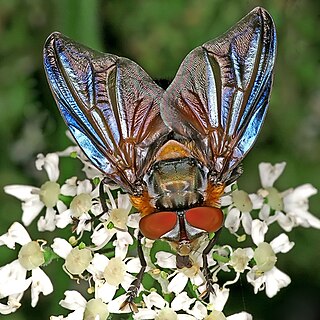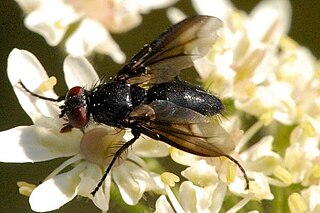Jurinella is a genus of flies in the family Tachinidae.

Cylindromyia is a genus of flies in the family Tachinidae.

Epalpus is a genus of flies in the family Tachinidae.
Exopalpus is a genus of flies in the family Tachinidae.
Gnadochaeta is a genus of flies in the family Tachinidae.

Microphthalma is a genus of flies in the family Tachinidae.

Phasia is a genus of flies in the family Tachinidae.
Rhachoepalpus is a genus of flies in the family Tachinidae.
Uramya is a genus of flies in the family Tachinidae.
Lespesia is a genus of flies in the family Tachinidae.

Voriini is a tribe of flies in the family Tachinidae. More junior homonyms exist of Wagneria than any other animal genus name.

Dexiinae is a subfamily of flies in the family Tachinidae.

Dexiini is a tribe of flies in the family Tachinidae.

Exoristinae is a subfamily of flies in the family Tachinidae. Most species are parasitoids of caterpillars.

Goniini is a tribe of parasitic flies in the family Tachinidae. Members of Goniini are distinguished from other Tachinidae by laying small "microtype" eggs that hatch only after being ingested by a host.

Phasiinae is a subfamily of flies in the family Tachinidae. Except for the small tribe Strongygastrini members of this subfamily attack only Heteroptera.

Tachininae is a subfamily of flies in the family Tachinidae.

Tachinini is a tribe of flies in the family Tachinidae.

Archytas is a genus of flies in the family Tachinidae.

Gymnosomatini is a tribe of bristle flies in the family Tachinidae. There are more than 30 genera and 200 described species in Gymnosomatini.













